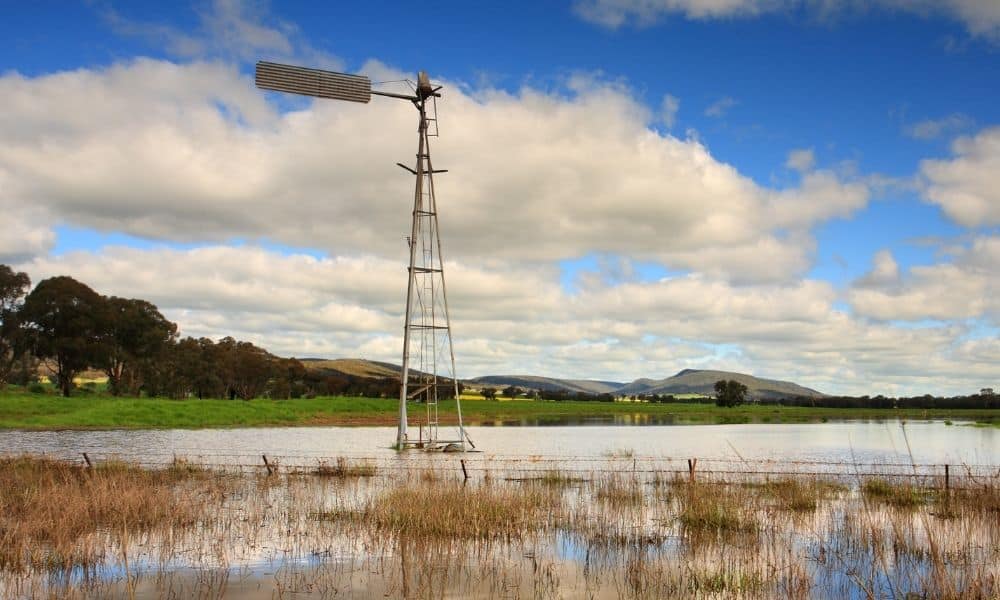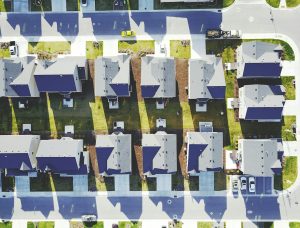If you live in the north or east of Australia, chances are that you’re in for a cooler than usual, wet, and potentially dangerous summer.
The Bureau of Meteorology has declared a La Niña weather event is underway in the Pacific for the second consecutive year. The last time back-to-back La Niñas occurred, Australia was hit with record-breaking rainfall, major flooding and Severe Tropical Cyclone Yasi. According to the Bureau, current modelling suggests this La Niña will persist until the late southern hemisphere summer or early autumn 2022.

While the cooler and wetter summer will probably hamper some of our holiday plans, it also has mixed consequences for the energy sector. The La Niña weather phenomenon influences wind and solar resources across Australia, as well as other parts of the world.
In this article, we will take a closer look at what La Niña is, how it affects Australia and its impact on solar panels and renewable energy production.
What is La Niña?
La Niña (Spanish for “the girl”), is a complex weather pattern where strong trade winds blow west across the Pacific Ocean, pushing warm surface water towards Asia and the seas north of Australia.
As a consequence of the warmer water, there is more evaporation leading to increased rainfall over northern and eastern Australia.
At the opposite end of the weather spectrum is El Niño (Spanish for “the boy”), a weather pattern that sees the warm water move east, towards South America. This can lead to reduced rainfall, warmer temperatures and potential drought conditions in Australia.
El Niño and La Niña events are a natural part of the global climate system. They occur when the Pacific Ocean and the atmosphere above it change from their neutral (‘normal’) state for several seasons.
These two weather patterns are part of the El Niño Southern Oscillation (ENSO) cycle, which sees them alternate every few years. The ENSO cycle is one of the most important drivers of global climate variability, particularly for most of Australia.
What ENSO stage is currently occurring is based on the sea surface temperatures in a relatively small patch of the central Pacific Ocean either side of the equator and south of Hawaii, called “Nino 3.4”.
When sea surface temperatures at Nino 3.4 are more than 0.8C below average, La Niña is officially declared.

How Does La Niña Impact Australia?
Right off the bat, no two La Niña events are exactly the same.
While many La Niña’s in Australia’s history have been mild and relatively non-eventful, there have been several events in recent decades which have had significant impacts, both positive and negative.
Rainfall over eastern Australia can be around 20 per cent higher than usual from December to March when La Niña is in play. A strong La Niña event carries the risk of flooding and severe tropical cyclones making landfall.
The successive La Niña events spanning 2010–12 were associated with record rainfall over much of Australia and some of the biggest floods in living memory. This followed years of severe drought in many parts of the country, and while it brought relief to many Australians, it also brought devastation to others.
A notable silver lining of La Niña events is that they generally reduce the risk of bushfires in the southeastern states of the country.
What Does La Niña Mean for Australia’s Solar and Renewable Energy?
Australia and the rest of the world are becoming increasingly reliant on renewable energy sources, particularly solar and wind power, with the goal to transition to a Net Zero emissions economy.
One of the challenges with solar and wind power is that, on any given day, the sun isn’t always shining, and the wind isn’t always blowing when we want it to. Long-term climate patterns such as La Niña and El Nino further exacerbate this problem, but on a much larger scale.
Researchers at Columbia’s Earth Institute have found that La Niña and El Nino “could change where the wind is blowing and where the sun is shining” for one to ten years at a time”. Study author, David Farnham, is the first to highlight what these longer-term patterns could mean for renewable power generation.
Below are some of the known impacts.
Modelling Accuracy
Renewable energy technologies are highly dependent on climate-related factors including sunlight, wind speed and water availability. Large-scale weather patterns and trends assist in planning and forecasting the collection of these resources which are essential for good management of energy generation and distribution systems.
While climate change from greenhouse gas emissions is certainly adding complexity to the modelling process, the study from Columbia’s Earth Institute shows that long-term weather patterns like La Niña are also making it difficult to predict the weather and subsequent renewable energy generation.
“One of the main findings is that these variations in year-to-year and decade-to-decade electricity generation can be very large,” said Farnham. “In one decade, wind power might only meet 61 to 98 percent of an area’s heating and cooling demands, then provide 129 to 200 percent in the next decade.”
Supply and Demand
Temperature is a key driver of demand for electricity.
In addition to altering the supply of wind and solar power, climate oscillations can be felt on our power grid as well in the form of increased demand for heating or cooling in our homes and offices.
The relationship between supply and demand can be complex. Research has shown that sometimes supply and demand go up at the same time. For example, if there are clearer skies than usual for several years, solar power generation will go up but so might demand from air conditioning. Alternatively, if winds generally carry warm air into an area during the wintertime, then lack of wind could increase demand for heating in the same location where wind power supply is lower than normal.
Understanding how climate events like La Niña impact supply and demand could be extremely important for energy companies. Not only could climate influence which type of renewable energy to prioritise in a given area, but also the companies’ bottom-line financials and project planning details regarding energy storage and transmission.
Interestingly, La Niña’s are usually welcomed by coal-fired generators as they typically prevent intense heatwave and bushfire conditions that pose some of the biggest threats to supply over the summer period.
Wind Conditions and Solar Radiation Intensity
El Niño and La Niña events affect wind conditions and solar radiation intensity in different parts of the world.
In Australia, during La Niña years, solar output tends to be lower than usual owing to an increased number of days with cloud and rain. This is particularly true for the eastern coastline and rooftop solar in Sydney and Brisbane, due to the cities’ proximity to the Pacific Ocean and onshore flow. Northern Australia can expect frequent shower and storm activity within the monsoon trough this summer, bringing more cloudy days than normal.
While this may impact a household’s individual solar output, the rapid development of new large-scale and distributed renewable resources across Australia coupled with milder summer conditions ideal for coal-fired generators means that no supply shortfalls are expected this summer.
As for the effect on wind power? Globally, La Niña produces variations in wind speed that, while ultimately unpredictable, can at times result in stronger winds in some areas and weaker winds in others. For Australia specifically, more powerful cyclones and storm systems may result in extreme wind speeds that can exceed the design limits of a wind turbine.
Potential Hail Damage
Australia has the highest average solar radiation per square metre of any continent in the world. More than 3 million rooftop solar power systems and over 3.9 GW of large-scale solar project have been installed across the country.
Solar panels are prone to extreme weather events, such as hail. Events such as Melbourne’s 2010 storm and Perth’s freak storm the same year could dramatically impact solar owners and, more broadly, the solar industry.
The potential for increased hail damage to solar panels as a result of La Niña events needs to be taken into account when modelling future energy scenarios.
Read more: How to protect your solar panels from hail
Climate Change Exacerbates ENSO Conditions
When you superimpose the effects of the natural ENSO cycle on the impacts of climate change, it becomes clear that the likelihood of more extreme La Niña and El Niño events is increasing.
Australian-led research found that the global climate is likely to become increasingly susceptible to extremes with super La Niña and El Niño events in the Pacific predicted to almost double in frequency this century.
Due to the increase in moisture availability as a result of global warming, rainfall variability will likely intensify. The La Niña phase of ENSO will lead to even heavier rainfall and increase the risk of flooding, while the El Niño phase will make heatwaves, severe bushfire weather and dry conditions even worse across eastern Australia.
For the energy sector, this means that power system vulnerabilities are likely to increase, while the increased variability in wind speeds and solar radiation intensity will make forecasting and planning more challenging than ever before.
Understanding and Accounting For Climatic Impacts
Despite the inherent difficulties, it’s important to plan to mitigate the impacts of extreme weather conditions. Planning strategies should incorporate a range of scenarios, including the potential for increased variability in wind speeds and solar radiation intensity during both La Niña and El Niño events.
Planning for renewables must take into account periods when there are fewer sunny days or extended cloudy periods at key times over summer as well as increased hail damage potential and fluctuations in supply and demand.
It is also important to account for the impacts of climate change on ENSO, which are likely to increase the intensity and frequency of extreme weather events in future.
With smart planning and interconnected systems, climatic variations such as La Niña don’t have to cause significant disruptions to the electricity grid now or into the future. Energy companies can balance out the fluctuations by spreading generation facilities over areas that are impacted differently by the same climate phenomena.
Understanding how different climate events impact renewable energy resources is essential for ensuring a stable, reliable, and sustainable power grid. By taking these impacts into account, we can make more informed decisions about renewable project investment, ultimately helping to ensure that we continue on our path to a zero-carbon future.
Now is the right time to switch to Melbourne solar energy. We recommend seeking at least 3 solar quotes to ensure that you are getting the best deal and selecting the right solar installer in Melbourne whom you can trust. With this, you can guarantee a solar system in Melbourne that meets your energy needs.






































